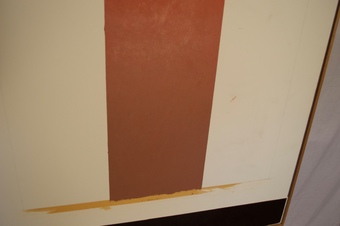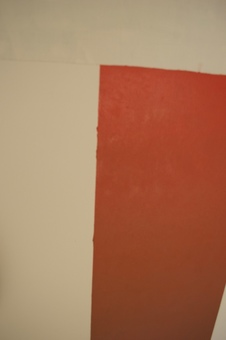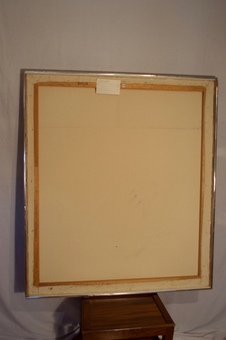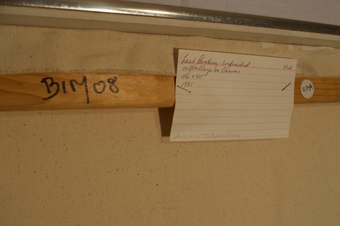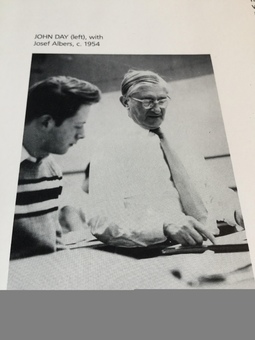featured item

£1,195.00
exceptional quality antique victorian oak marquetry strun... Read more
Unique Antiques By Emma ..
last painting 1981
- View other items in:
- antique art
- 20th century art
private seller
Enquire about this antique
Private seller has 10 antiques for sale.
click here to see them all
John Day
American Born 1932 Died 1982
Born in Malden Massachusetts on 27 May 1932, John Day’s earliest years resonated with the localised sense of want and of the scarcity and anxiety that permeated American culture throughout the Great Depression.
When pressed about his childhood, Day focused on the loving relationship that he enjoyed with his grandmother, Frances Hamblin, but the influence of his father, an anesthesiologist and his classical pianist mother manifested in a number of interesting and often unexpected ways as his oeuvre developed.
Rather than open his paintings as a forum in which to process identity, Day carefully isolated respective characteristics, fomenting his most vulnerable personal presence through artistic absence.
Day sold his first painting at age fifteen, and at eighteen began his studies with Josef Albers in Yale University’s
Department of Design.
Over the next three decades, John Day tested and explored a number of different artistic practices, each a discrete permutation of the theoretical and practical variables that would allow him, ultimately, to “step out of the way”, freeing each of his viewers to a reception unsettling in its forceful solitude. The carefully calculated richness of Day’s paintings resides in their absences and exclusions and restraint as much as in their application of paint to canvas.
Stephen Caffey, Asst. Professor of Art & Architectural History, Texas A&M University
In April of 1982, John Day died from complications related to?Acquired Immune Deficiency Syndrome. His untimely death came just as his work began to articulate its most compelling aesthetic. As is the case with each life among the millions lost of this plague over the past quarter-century, we will never experience the fullest range of John Day’s potential.
PUBLIC AND CORPORATE COLLECTIONS
Adelphi University, Garden City.
New York?The American Broadcasting Company.
New York?American Council of Learned Societies.
New York?The Anderson Company.
Chicago, Illinois?The Avis Corporation.
New York?The Brooklyn Museum, Brooklyn.
New York?Chase Manhattan Bank.
New York?Chase Manhattan Bank.
Paris, France?The Deutsche Bank.
New York?Flint Institute of Arts, Flint.
Michigan?Guild Hall Museum, East Hampton.
New York?Hirshhorn Museum and Sculpture Garden.
Washington, D.C.?Lyman Allyn Museum.
New London, Connecticut?Metropolitan Museum of Art.
New York, New York?Montclair Art Museum.
Montclair, New Jersey?Musee Cantini.
Marseilles, France?Musee Pompidou.
Centre National de ‘Art Contemporain, Paris, France.
The Museum of Modern Art, New York.
New York?Nabisco Inc. East Hanover, New Jersey.?
The National Museum of American Art, Washington D.C.?
The Newark Museum, Newark, New Jersey?
The Parrish Art Museum, Southampton, New Jersey.?
Sheldon Memorial Art Gallery, University of Nebraska, Lincoln.
Nebraska Solomon R Guggenheim Museum, New York.
New York?The United Bank of Illinois, Rockford.
Illinois?Carlson Gallery, University of Bridgeport, Bridgeport, Connecticut.
Whitney Museum of American Art, New York.
New York?Yale University Art Gallery, New Haven, Connecticut.
Erebos
The development of the paintings, which ensued, parallels a passage through the land of Erebos*. They lead from the early dark pictures of people imprisoned in rock, to those of passageways with light beyond, to the paintings of the bright precarious homes of the gods, and to his last paintings of pure coloured light.
*In general, Erebos signified the unknown darkness. But Erebos is also a place that part of Hades through which souls of the dead must pass in order to reach Elysium
Reliefs
Day’s reliefs began appearing after a series of paintings employing heavy impasto. These paintings of ancient unknown cities do not use impasto in a seventeenth century or an expressionist manner, because neither the awareness of the paint nor the gesture of the artist is the goals. John Day created these chaotic ruined cities rather like a pastry chief creates some great confection that will melt in the rain. This is architecture designed to have an appetizing surface beauty, created for the pleasure of the moment.
Icons of Colour
In these paintings, he came to terms with the teachings of Josef Albers, and in so doing, came to terms with himself. After experience of the Greek landscape he moved to black, white and blue, and to all-white paintings, experimenting in his own way with the reduction of colour, an experiment which he continued until the colours finally dematerialized in his last paintings. Albers? interaction of colour was a strong motivation but it served as a theory to be tested by Day’s drive to spiritualize and mystify colour, rather then analyze it.
Reviews of the Paintings by John Day; Critics from The New York Times, Herald Tribune, Le Figaro & art journals:
“In this group I found two artists who interested me... John Day, Whose work is well enough known to make him a surprise in an exhibition with exploratory overtones, is represented by recent work where he holds to his established level as a restrained pleasantly non-confessional surrealist.”
1 “...an intriguing and beautifully painted show.” 2?“...in his Erebos Series John Day reveals many secrets to us.”
4 “We can immediately say something about Day. He is morbid – delightfully morbid! He brings something new to Surrealism which, as a movement, has had an extraordinarily long lease on life.”
5 “Day’s fixation is with Erebos, the region of darkness lying just above hell. The corridors he paints leading to (or quite possibly from) hell are mounted with shadowy portraits of vaguely remembered individuals. Strangely still and as drained of life, even while in their most characteristic poses, they endure as transfers of themselves; these deathly quiet corridors recall Dante’s per me si va tra la perduta gente?...The impression of ineluctability is heightened by the corridors? entrance (or exit) of harsh white light and an exact, classical sense of perspective.”
6 “John Day...was a disciple of Josef Albers and worked in a strict geometric manner until he spent time in Greece and France. Then, on that stark foundation, he began to add strange temples, corridors and long perspective visions. Not content with merely painting people in his compositions, he pasted on old, faded portrait photographs to create haunting interior-scapes where gods conceivably walk.”
7 “The paintings, which open on the sides (Gateway of Erebos, 1971, and Erebos-Elle, 1971) offer on the opportunity only to move in dangerous directions.”
Is juxtaposed with is opposite...In the multi-level „unrealities? John Day creates through realist techniques, one confronts his own ambivalent attitude towards death – and life.”
2. Carol Cutler, International Herald Tribune (May 1969)?
3. Le Figaro (March, 1972)?
4. Lillian Lonngren, Art News (February 1963)?
5. Gordon Brown, “Only the Artist Knows,” Art Magazine (March 1968)?
6. Michael Peppiat, “Paris, “ Art International (Summer 1969)?
7. Carol Cutler, “Paris: The New Surrealists, “ Art in America (March-April 1970)
8. Karl Lunde, “On to Erebos,” Art and Artists (March 1972)?
9. Ellen Schwartz, “Paris Letter – April,” Art International (Summer 1972)
Antiques.co.uk Ref: BRFAH648
- Maker/Artist:
- John Day
- Materials:
- Oil on canvas
- Width (cm):
- 107
- Height (cm):
- 122
Private seller
Fablulous antiques and art





